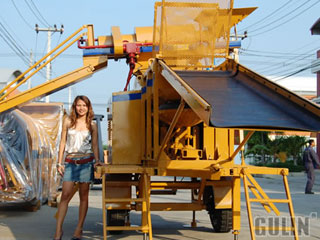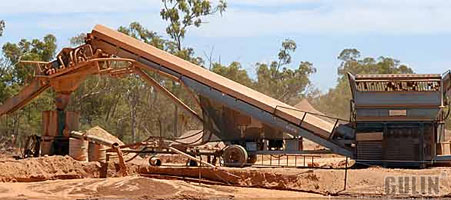Small scale mining, and particularly alluvial panning of minerals, is a relatively new informal economic activity, which has been sweeping across the globe in the past two decades.

alluvial gold mining and panning machine
The Zambezi Basin and its water resources are shared by eight of the fourteen Southern African Development Community (SADC) states. The long-term environmental well being of the Zambezi river, its tributaries and associated dams and lakes, depends on the types and volumes of economic activities which take place within the basin. These activities include urbanisation, logging, agriculture, manufacturing, tourism and mining. More recently, small-scale mining and alluvial gold panning activities have taken centre stage as a result of both the economic structural adjustment programmes (ESAPs) and recurrent droughts within the SADC region. It is estimated that up to 2 million people directly or indirectly benefit from small-scale and alluvial panning of minerals within the Zambezi Basin. Most of this mining activity takes place on riverbeds and banks and releases enormous amounts of silt and heavy metals into river systems, dams and lakes. Siltation of rivers reduces river conveyance and the storage capacity of reservoirs, which in turn makes several areas prone to flooding. Other effects of siltation include the shortening of reservoir life spans, depleting fisheries and diminishing hydropower generation potential. Small-scale miners are also responsible for clearing extensive areas of natural forests for firewood and infrastructural constructions.
Overview of small scale mining
There is as yet no widely accepted definition of artisanal and small scale mining.
In developing countries, most of the small scale miners (men women and children) are rural and poor. In such countries as Bolivia, Colombia, Indonesia, Mali, the Philippines and Zimbabwe, they participate in the activity seasonally when they are not involved in agriculture or during drought periods.
Small-scale mining is labour intensive and thus provides employment and incomes to large numbers of people who are generally uneducated, poor and live in remote areas where no opportunities exist for formal employment. It is estimated that in the southern African region alone, up to 10 million people are employed or benefit directly from small-scale and artisanal mining activities involving more than a dozen different types of minerals dominated by gold and a variety of gemstones.

Environmental, economic and social costs and benefits
Based on the analysis of economic and environmental costs and benefits, a study done in Zimbabwe (Mashonaland West Province) showed that alluvial gold panning as presently practiced is not economic when a full range of economic, social and environmental costs are compared with the limited number of benefits (Milne and Marongwe, 1995). The distribution of costs and benefits is an important aspect for policy makers.
Policy considerations are in most cases given towards having the beneficiaries compensating the losers for externalities.
Costs to society include either increased internal borrowing and upward pressure on domestic interests rates, increasing external borrowing and pressure on balance of payments, or difficult trade-offs by reducing spending in other programmes such as health or education. Where funds are borrowed the question of debt servicing and the impact this has on current expenditures must be raised.
The gold panning situation represents a classic case of externalities caused by inappropriate natural resource extraction. Any policy formulation option for alluvial gold panning activities must take into account the fact that miners should take more and increasing responsibility for their downstream negative environmental and social impacts within a more appropriate institutional and property regime.

